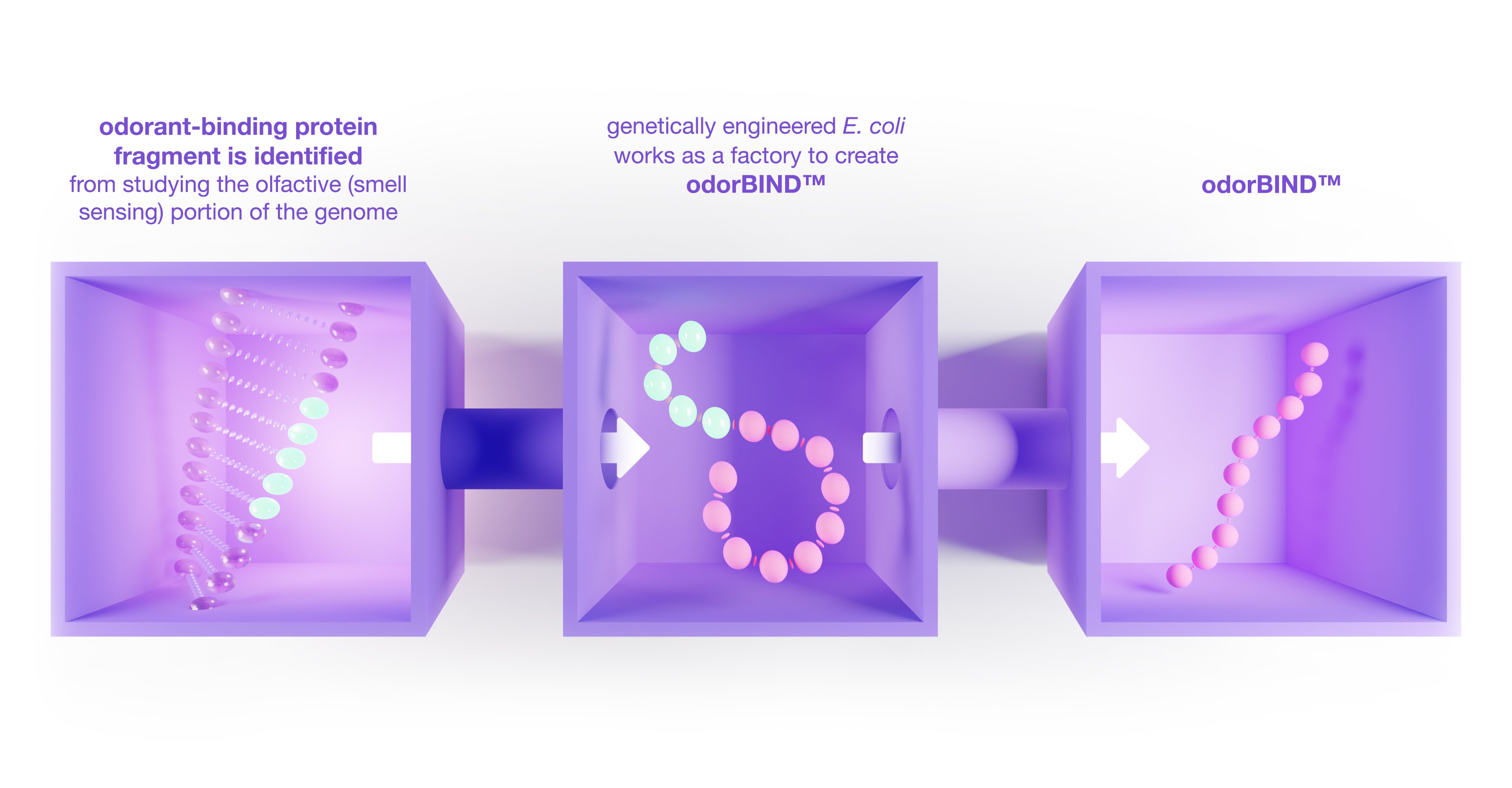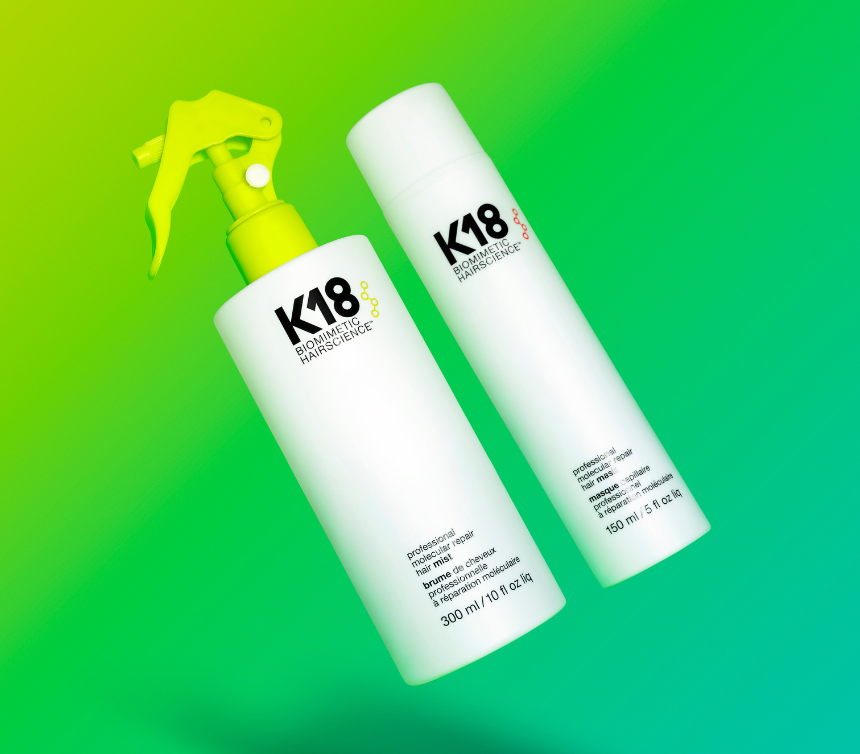You may have heard of the Human Genome Project. This 13-year-long scientific exploration paved the way for us to read the blueprint of life: the DNA instructions for human development, function, and reproduction.
The Human Genome Project is a prime example of genome mapping: the process of discovering the complete set of DNA for a specific organism.

Genome mapping unlocks the secrets of DNA, enabling breakthroughs like the creation of the K18PEPTIDE™ for hair repair, new functional ingredients with novel benefits, and the manufacturing of eco-friendly ingredients through fermentation.
In this Science Sunday, we’ll unpack how scientists use genomic data (information gathered by genome mapping) to create ingredients that mimic nature (like the K18PEPTIDE™ and odorBIND™), produce more sustainable ingredient alternatives, and make new ingredients with new functionalities.
But first, let’s talk about what genomes are and the information they contain.
genomes unlock biological insights
Genes are sequences of DNA that contain the code for specific traits. Most genes code for proteins that perform a specific function in an organism. For example, COL1A1 is a gene that contains the instructions to make components of the protein collagen type-1. This is the most abundant collagen found in the human body, including your skin, and gives structure and strength to the skin.
Scientists use genome mapping to identify the location of all of the genes on a chromosome, or the package that contains an organism’s DNA.
Biologists sequence (AKA map or read) the genomes of microbes, fungi, insects, mammals, and humans.
These genomes can provide us with a wealth of information. Access to genomic information enables scientists to understand the genetic basis of life, address specific biological or ecological challenges, and allows for the creation of new ingredients with unique functionalities to solve problems or give new benefits.
from the keratin genome to the K18PEPTIDEtm
Without the power of genome mapping, we wouldn’t have been able to create our breakthrough ingredient: the K18PEPTIDE™ or our latest innovation, odorBIND™.
When it comes to the K18PEPTIDE™, to discover all the peptides that had the amino acids necessary to fit into the holistic system of bonds in hair, Professor Artur M. Cavaco-Paulo and his team of scientists identified the human keratin genome and all of the proteins it expressed (called a proteome) for K18.
After 10 years of exploring the functions of the peptide sequences of the genome, the team K18 bioscientists found the perfect sequence to penetrate the hair strand and reconnect broken polypeptide chains to repair hair damage.
But the applications of genome mapping don’t stop there—we can also use genomic information and synthetic biology to genetically engineer organisms to produce more environmentally friendly versions of traditionally extractive ingredients.
sustainable ingredients are built with synthetic biology
Modifying the sequence of genes in organisms like Escherichia coli (E. coli) also gives us the ability to engineer DNA to produce products. Synthetic biology combines principles from biology, engineering, genetics, biochemistry, and computer science to design and construct new biological systems. The multidisciplinary field also involves redesigning existing natural biological systems for new useful purposes.
The information stored in genomes can help us identify genes that inspire the production of ingredients of interest. We can then use those gene(s) to engineer the DNA of microorganisms to create more sustainable and functional alternatives to natural ingredients. For instance, using genetically engineered yeast can produce thousands of liters of rose oil (an ingredient used in skincare) replacing the need to grow and harvest acres of roses which requires significant land, water, and energy.
We can also use genomic information from genome mapping to produce vegan versions of ingredients that are traditionally sourced from animals. Hyaluronic acid, another common skincare ingredient, is originally derived from rooster combs. Using synthetic biology, we can engineer E. coli to produce hyaluronic acid through fermentation, the same process that produces wine and beer.
combining genes creates new possibilities (see: AirWash™)
Genomic data can also be used to generate novel ingredients optimized for human biology. Our knowledge of the genome of microorganisms like E. coli allows us to engineer fusion genes (genes created by joining parts of two different genes). These fusion genes produce fusion proteins that are optimized for specific functions or have properties that are enhanced compared to the proteins found in nature.
The creation of fusion proteins is a powerful tool in biotechnology and pharmaceutical research, allowing for the development of new therapeutics and cleaner industrial processes. Fusion proteins also give us the tools to dream up new product functionalities for beauty.
In K18’s new AirWash™ dry shampoo, we genetically engineered E. coli to produce a fusion protein that combines the functionality of an odorant-binding protein fragment, identified from studying the olfactive (smell sensing) portion of the pig genome.
But don’t worry—thanks to genome mapping no pigs were harmed in the making of odorBIND™ smart-release biotechnology (it’s totally vegan and cruelty-free!).
How? We used the mapped genome of pigs to isolate and recreate their odor-detection abilities in the lab.

The odorant-binding portion of the protein binds molecules that cause smells on the surface of your hair to provide long-lasting odor protection.
This is how using ingredients that are produced with synthetic biology is not only more sustainable but also addresses the cause as opposed to masking the problem.
Creating ingredients optimized for our human biology, like odorBIND™ and K18PEPTIDE™, means that we need fewer ingredients for better results, leading to less wasted product, and less of a negative impact on resources.
It’s the future of haircare, powered by biotech.



